Mass timber is transforming how we think about architecture, combining sustainability with stunning design. From Vancouver’s record-breaking tallest timber building to Portland’s breathtaking PDX Airport terminal roof and Quebec’s Nordic-style chalet, this versatile material redefines what’s possible in construction. Across North America, architects use mass timber to create strong, sustainable, and visually striking structures that set a new standard for innovation.
Quick looks
- Mass timber is revolutionizing North American architecture, blending sustainability, strength, and striking design in projects.
- As a renewable, carbon-storing resource, mass timber is an eco-friendly alternative to steel and concrete, reducing construction’s environmental impact.
- Mass timber showcases versatility across functional and aesthetic design, from airport terminal roofs and civic pavilions to academic buildings and Nordic-style chalets.
- Prefabricated panels, combined with natural warmth and durability, make mass timber an efficient choice for building greener, smarter structures.
The rise of mass timber
Mass timber is a modern construction material made by layering and compressing wood for exceptional strength and durability. Unlike traditional wood framing, mass timber can handle the load-bearing demands of large-scale projects, making it a game-changer in architecture. Its growing popularity stems from a unique blend of sustainability, versatility, and beauty.
Sustainability is one of mass timber’s biggest draws. As a renewable resource, wood absorbs and stores carbon throughout its lifecycle, making it a greener alternative to steel or concrete. When responsibly sourced, it helps reduce a building’s overall carbon footprint and supports efforts to combat climate change.
Mass timber’s aesthetic appeal is undeniable. Its natural warmth and grain create a biophilic connection that brings the outdoors in, offering a more inviting and calming atmosphere. Architects love its flexibility for creating striking, open designs, whether it’s the Nordic-inspired chalet in Quebec or the massive timber roof of Portland’s PDX Airport terminal.
Despite its lightweight nature, mass timber is incredibly strong, rivaling traditional materials in structural performance. This balance of strength and flexibility has enabled projects like Vancouver’s towering timber high-rise and Milwaukee’s Ascent building to push boundaries in construction.
Beyond its beauty and strength, mass timber contributes to more efficient building processes. Prefabricated panels simplify assembly, cutting down on construction time and waste. Together, these benefits position mass timber as a forward-thinking solution for creating greener, smarter buildings across North America.
6 must-see mass timber projects across North America
Brock Commons Tallwood House
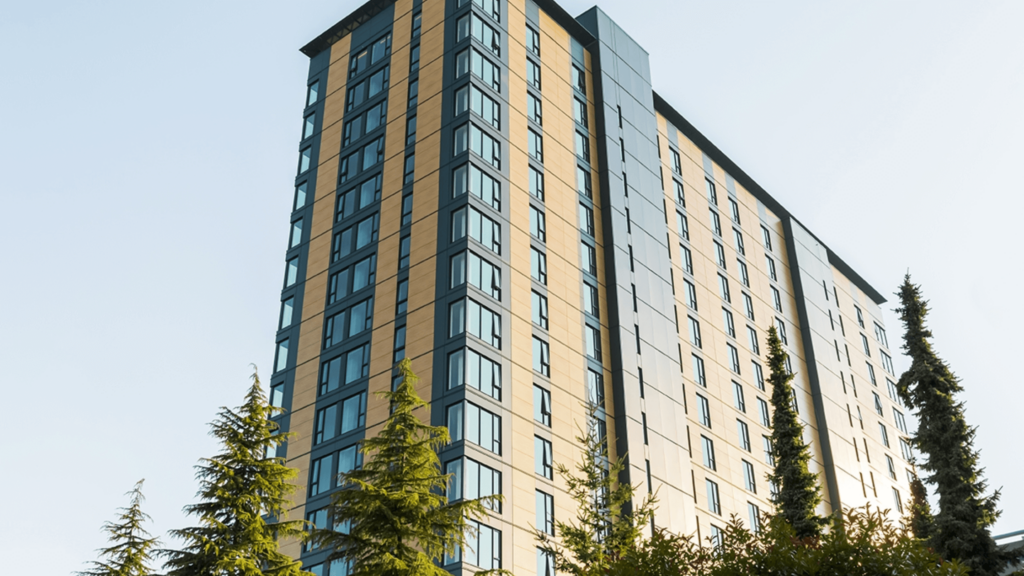
- Location: Vancouver, Canada
- Architect/Builder: Acton Ostry Architects
- Type of Building: Mixed-use residential and academic spaces
Brock Commons Tallwood House at the University of British Columbia in Vancouver is a landmark in mass timber construction. At 18 stories, it was one of the first tall wood hybrid buildings of its kind, combining cross-laminated timber (CLT) panels with a concrete core. The project highlights mass timber’s potential for reducing construction times and carbon emissions while maintaining structural integrity. Designed for mixed-use purposes, including residential and academic spaces, Brock Commons Tallwood House showcases the future of sustainable, large-scale urban development.
Limberlost Place
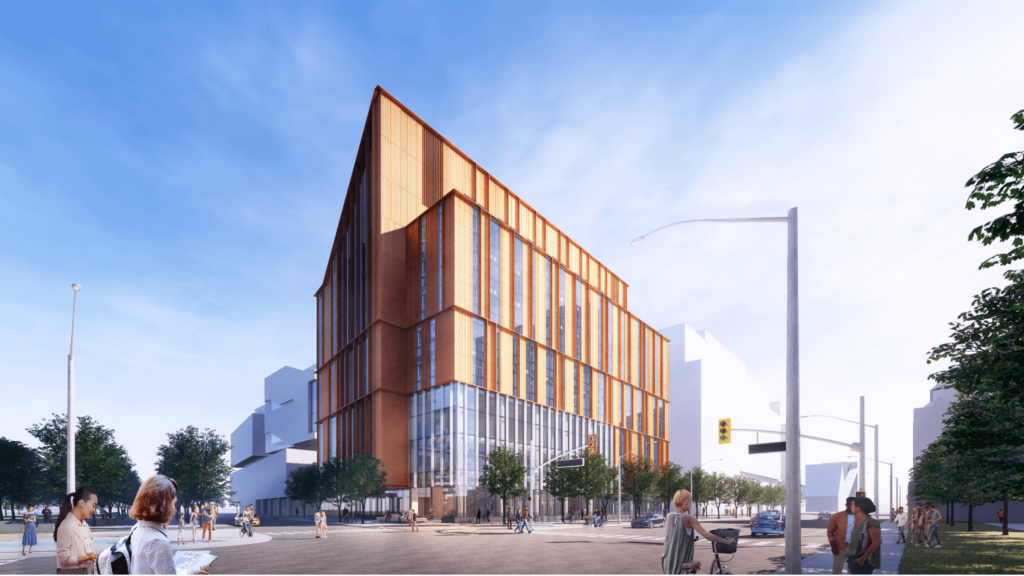
- Location: Toronto, Canada
- Architect/Builder: Moriyama & Teshima Architects, Acton Ostry Architects
- Type of Building: Educational facility
Limberlost Place is a groundbreaking 10-story mass timber academic building at George Brown College in Toronto. It is one of Ontario’s first tall, net-zero carbon wood structures. Designed by Moriyama & Teshima Architects in collaboration with Acton Ostry Architects, it demonstrates how mass timber can combine sustainability, innovation, and aesthetics.
The building incorporates CLT and glulam (glued laminated timber) beams, reducing its environmental impact while creating a striking architectural presence. Limberlost Place models future academic and institutional structures, blending energy efficiency, durability, and biophilic design to inspire the next generation of students.
PDX Airport Terminal Roof
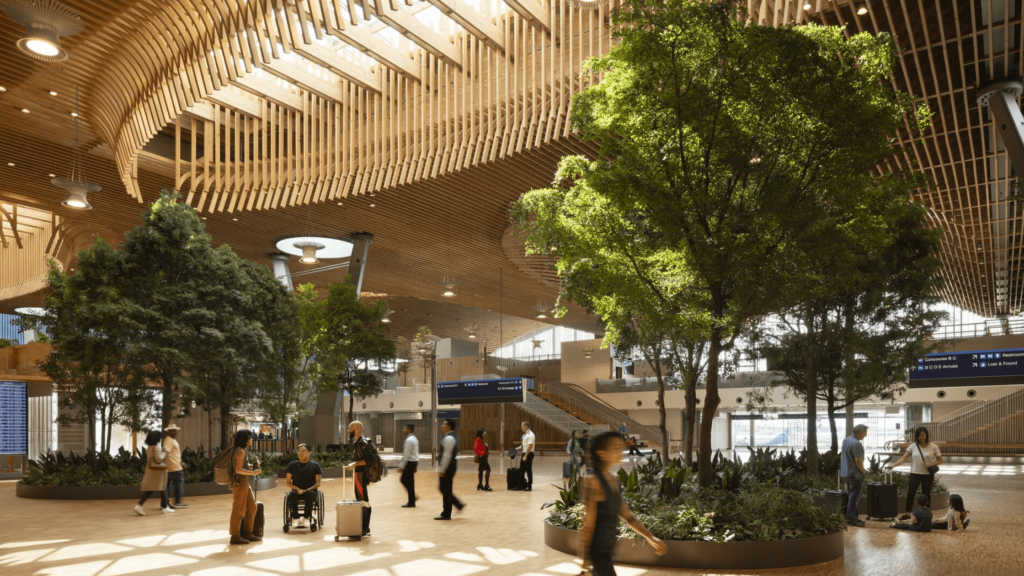
- Location: Portland, Oregon
- Architect/Builder: ZGF Architects
- Type of Building: Airport terminal roof
The Portland International Airport (PDX) terminal expansion features an awe-inspiring mass timber roof that spans approximately 400,000 square feet. Designed by ZGF Architects, the roof is constructed from regionally sourced Douglas Fir and showcases over 3.3 million board feet of mass timber from Pacific Northwest forests.
This design incorporates more than 400 glulam (glued-laminated) arches that extend up to 80 feet, paired with a lattice of Douglas Fir inspired by traditional regional weaving patterns. The roof provides structural support and creates a warm, biophilic atmosphere for travelers, reflecting Oregon’s natural beauty.
What sets this project apart is its use of prefabricated modules, which were assembled off-site and transported to the terminal for efficient installation. This innovative approach minimized disruption to airport operations while ensuring precision and sustainability.
Nordic-style Mass Timber Chalet
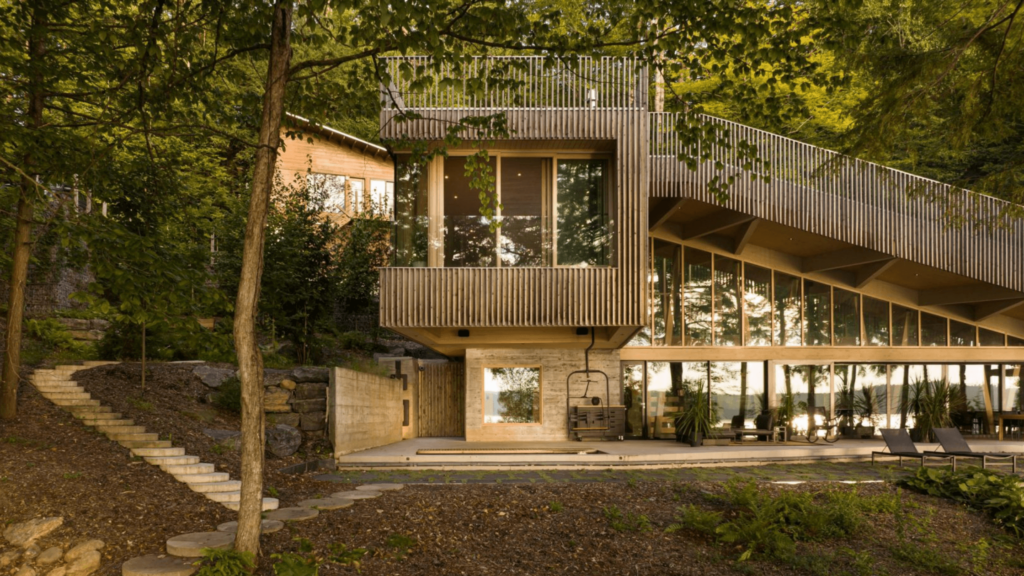
- Location: Quebec, Canada
- Architect/Builder: Lemay
- Type of Building: Residential chalet
This elegant Nordic-style chalet designed by Lemay in Quebec exemplifies how mass timber can blend modernity with nature. The structure’s timber frame harmonizes with its surroundings, while its efficient construction reduces environmental impact. Its minimalist design and biophilic elements make it a standout in residential architecture.
Ascent
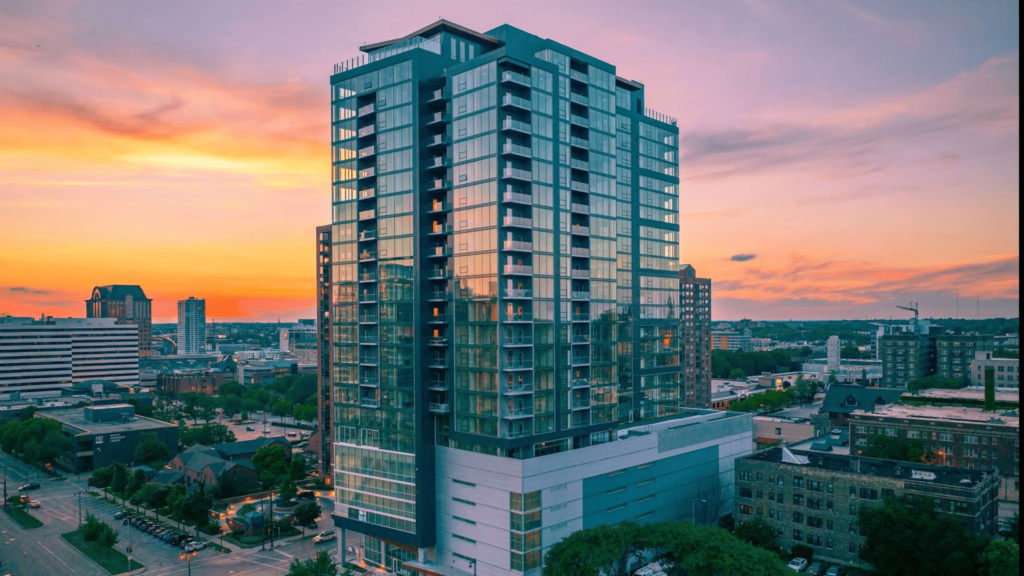
- Location: Milwaukee, Wisconsin
- Architect/Builder: Korb + Associates Architects
- Type of Building: Residential high-rise
Ascent in Milwaukee is a record-breaking mass timber high-rise that stands 25 stories and 284 feet tall. Designed by Korb + Associates Architects, the building combines CLT floors with a hybrid concrete core, reducing its carbon footprint while maintaining strength and durability. This residential high-rise has set a global benchmark for sustainable urban living and innovation in high-rise construction.
Coming Soon! 55-Story Timber Skyscraper
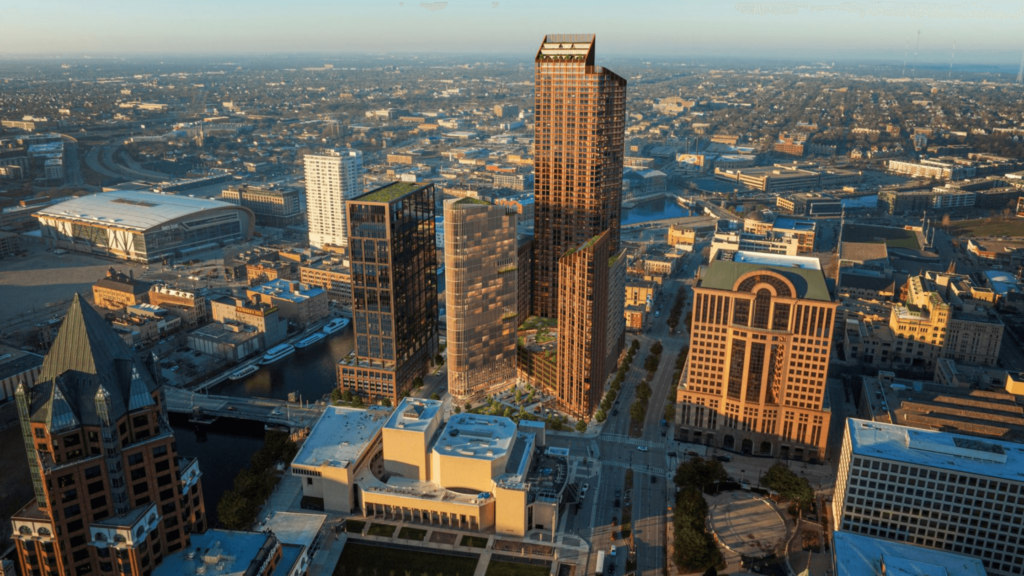
- Location: Milwaukee, Wisconsin
- Architect/Builder: Michael Green Architecture
- Type of Building: Mixed-use high-rise
A proposed 55-story skyscraper in Milwaukee by Michael Green Architecture will push the boundaries of mass timber construction. If completed, it will become one of the world’s tallest timber buildings, demonstrating the scalability of this sustainable material. The high-rise will use advanced CLT technology and innovative engineering techniques to ensure durability and safety at such heights.
The project emphasizes sustainability and integrates eco-friendly features such as energy-efficient systems and a reduced carbon footprint compared to traditional skyscrapers. With its innovative design, this skyscraper aims to redefine urban architecture and serve as a benchmark for future timber high-rises globally.
Bottom line
Mass timber is more than just a building material—it’s a movement reshaping the future of architecture and construction. From the record-breaking heights of Milwaukee’s proposed wunder-skyscraper to the sustainable elegance of Quebec’s Nordic-style chalet, these projects highlight this innovative material’s incredible versatility, beauty, and eco-conscious benefits.
As architects and builders continue to push the boundaries of mass timber’s capabilities, it’s clear that this approach is paving the way for greener, more sustainable cities and communities. By reducing carbon footprints while creating stunning, functional spaces, mass timber sets a new standard for construction that’s as environmentally friendly as it is visually inspiring.
Want to stay updated on the latest trends in sustainable building and construction innovation? Subscribe to our newsletter and get exclusive insights, project highlights, and industry news delivered straight to your inbox!
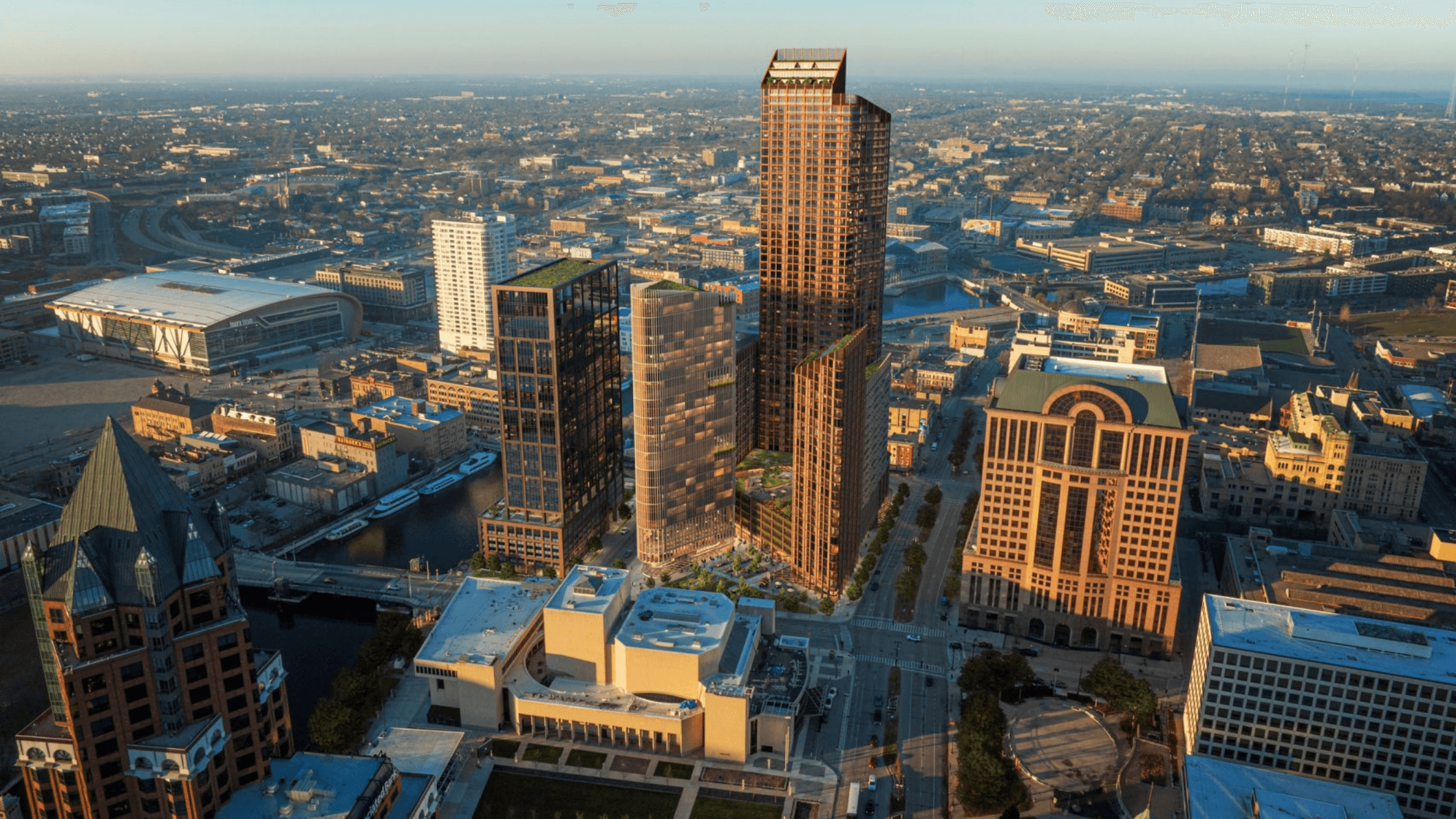


1 comment